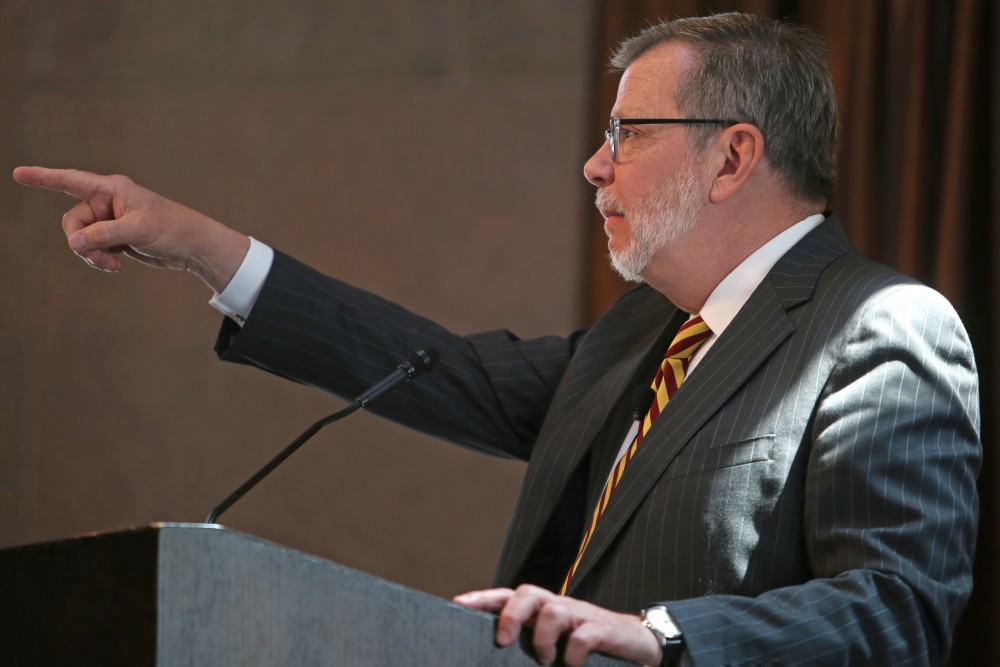University of Minnesota President Eric Kaler has one more year to meet his goal of cutting administrative spending by millions.
Kaler will step down as president in July 2019, a decision he announced earlier this month. This academic year marks the last year of Kaler’s six-year plan to reduce administrative spending by $90 million, a goal he is on track to exceed, according to University officials. So far, about $70 million in administrative expenses have been cut since his plan began.
“During my presidency we held tuition increases systemwide to under the rate of inflation, all while cutting more than $90 million in expenses,” Kaler said in his intent to resign statement earlier this month.
When Kaler began his presidency, the Wall Street Journal published an article criticizing the University’s administrative spending in 2012. The article received national attention and was a factor in the creation of Kaler’s plan to cut administrative costs, said Brian Burnett, senior vice president for finance and operations.
The article criticized the high number of administrative jobs and attributed this as a factor that led to tuition increases under then-president Bob Bruininks. Bruininks led a presidency marked by high tuition increases – resident undergraduate tuition nearly doubled during his term.
Burnett said the article is not fully accurate because the University can’t be compared to other University systems. Unlike some other schools, the University has one administrative role for the chancellor of the flagship campus and the at-large president of the University system, which is held by Kaler. At other schools, like the University of Wisconsin, that role is split between two administrators.
“One of the goals [Kaler] had was to reduce administrative expenses and reallocate those funds to higher priorities like financial aid, research and teaching to focus more on the University’s core mission,” Burnett said.
During his last year as president, Kaler plans to cut another $20 million in administrative costs in order to meet his goal. In total, about $91 million in cuts will be made by the end of Kaler’s presidency next year, Burnett said.
The majority of the cuts have been made by having fewer administrators at the University and by having departments spend less money when possible.
“At the University about 70 percent of our expenses are people. We’re a very labor intensive business…you’re not going to get to numbers of this size without impacting workforce,” Burnett said.
Burnett said administrative spending decreases have allowed the University to avoid raises in tuition for students.
“Quite frankly, tuition rates wouldn’t be where they are today is we had not done this…in part with the Legislature’s support and this effort, we’ve kept tuition increases as low as possible,” he said.
Chair of the University’s Faculty Consultative Committee Joseph Konstan said keeping undergraduate resident tuition relatively flat was a priority of Kalers but other issues must be addressed as well.
“Personally I found it frustrating that so much attention was being paid to undergraduate tuition at a time when there was so many other needs in the institution, including graduate and professional tuition and compensation for employees and investing in areas that need new strength,” he said.

















